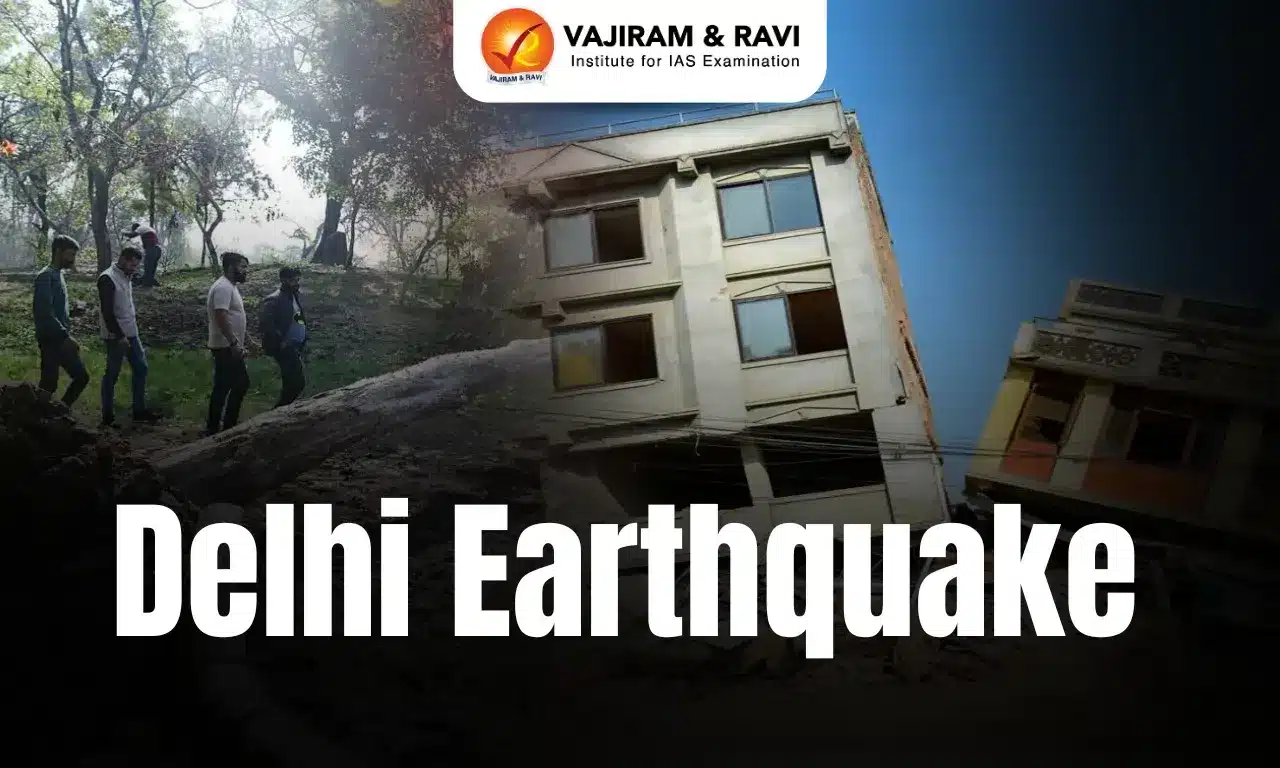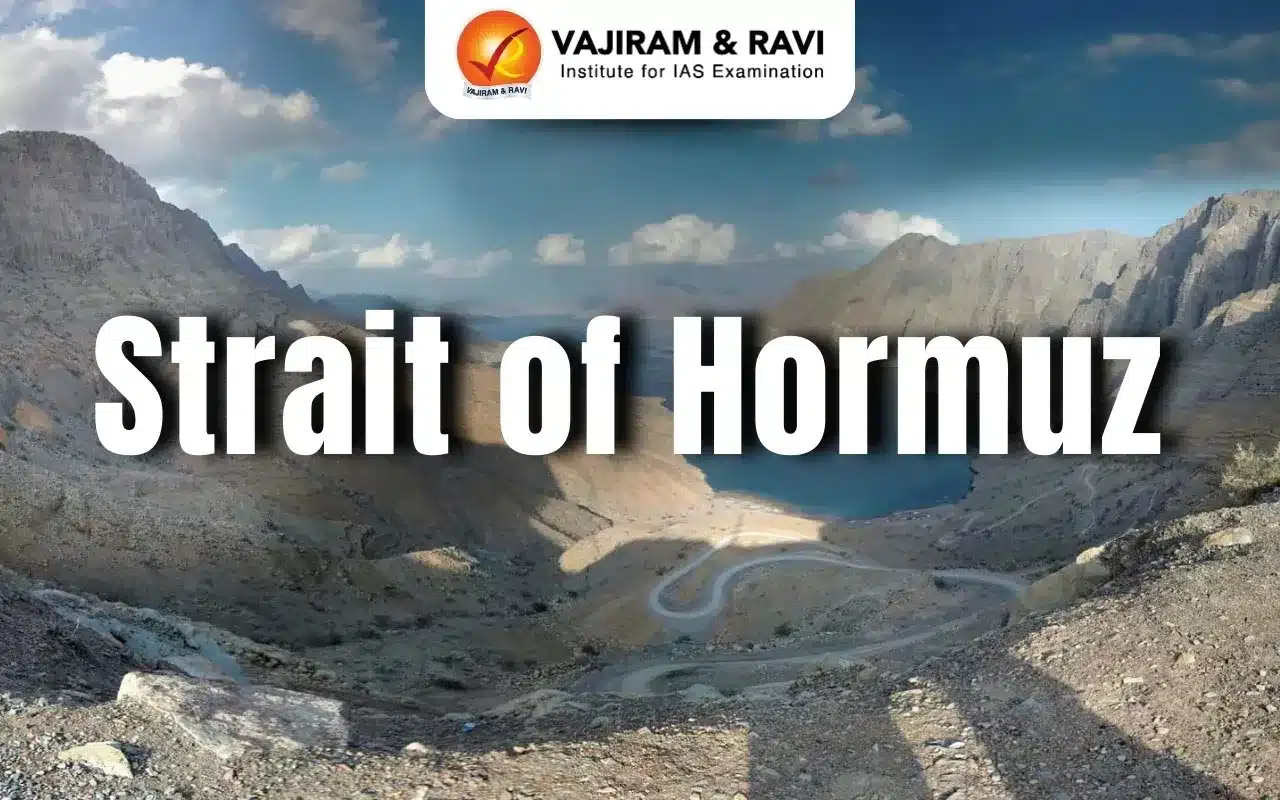What’s in Today’s Article?
- Delhi Earthquake Latest News
- Introduction
- Seismic Activity in Delhi
- Understanding the Aravalli-Delhi Fold Belt
- Different from Himalayan Earthquakes
- Sound During the Earthquake
- Possibility of a Large Earthquake in Delhi
- Conclusion
- Delhi Earthquake FAQs
Delhi Earthquake Latest News
- On 17th February before dawn, Delhi experienced a magnitude 4 earthquake, making it the strongest quake to have originated within the city in the past five years.
Introduction
- Delhi is located in a seismically active region, making it susceptible to earthquakes.
- Although most tremors felt in the city originate from far-off places like Afghanistan or the Himalayan region, the recent earthquake originated within Delhi itself.
- The event has sparked discussions about the city’s seismic risk, geological features, and the possibility of stronger earthquakes in the future.
Seismic Activity in Delhi
- Delhi falls under Zone 4 of India’s earthquake hazard map, meaning it is in the second-highest category of risk.
- This classification is based on the MSK scale (Medvedev-Sponheuer-Karnik scale), which measures earthquake intensity. Zone 4 areas can experience MSK-8 intensity, making them vulnerable to structural damage.
- In the last five years, Delhi and its surrounding regions have recorded multiple small earthquakes (magnitude 2-3), mostly unnoticed by residents but detected by seismometers.
- Such low-magnitude tremors are common, but stronger quakes are rare in the region.
Understanding the Aravalli-Delhi Fold Belt
- Delhi is part of the Aravalli-Delhi Fold Belt, a geological structure that extends from southern and eastern Rajasthan to Haryana and Delhi.
- This region has undergone significant geological changes over millions of years, leading to folded rock formations.
- These geological stresses can sometimes trigger mild earthquakes.
Different from Himalayan Earthquakes
- Unlike the Himalayan earthquakes, which are caused by the subduction of the Indian tectonic plate under the Eurasian plate, earthquakes in the Aravalli-Delhi Fold Belt occur due to pre-existing geological faults.
- Although the region was more seismically active in the past, tectonic activity has slowed down over time, making strong earthquakes less likely.
Sound During the Earthquake
- Many Delhi residents reported hearing a peculiar sound during the earthquake.
- While earthquakes do produce sound, it is often at frequencies beyond human hearing.
- However, in some cases, large earthquakes can create audible sounds due to vibrations.
- These sounds are often mistaken for the earthquake itself but are usually caused by the shaking of buildings, objects, or underground structures.
Possibility of a Large Earthquake in Delhi
- While historical records mention strong earthquakes affecting Delhi in the past, experts believe that a major earthquake originating in Delhi is highly unlikely. The strongest known earthquakes in Delhi’s history include:
- 1720: A powerful earthquake reported in Delhi.
- 1803: A large earthquake that supposedly damaged the Qutub Minar (later found to have originated near Srinagar-Devprayag in Uttarakhand).
- Delhi’s tectonic setup does not indicate the presence of large stress build-ups required for high-magnitude earthquakes.
- However, the city remains vulnerable to strong quakes originating in the Himalayan region, which could cause significant damage due to its dense population and high-rise buildings.
Conclusion
- Delhi’s recent earthquake has once again highlighted the city’s seismic vulnerability.
- While a large earthquake in Delhi is unlikely, the city’s location in Zone 4 means it is susceptible to moderate tremors.
- Understanding Delhi’s seismic history and geological structure is crucial for preparedness and disaster mitigation.
- Authorities and residents should remain vigilant and ensure that buildings and infrastructure are earthquake-resistant to minimize risks in case of a stronger quake in the future.
Delhi Earthquake FAQs
Q1. Why did the recent Delhi earthquake gain attention?
Ans. It was the strongest earthquake in Delhi in five years, with its epicenter near Dhaula Kuan.
Q2. What is Delhi’s earthquake risk level?
Ans. Delhi falls in Zone 4, meaning it has a high seismic risk with the potential for significant damage.
Q3. Why do earthquakes occur in Delhi?
Ans. Delhi lies in the Aravalli-Delhi Fold Belt, which has pre-existing faults that occasionally release stress as earthquakes.
Q4. Can Delhi experience a major earthquake?
Ans. While strong earthquakes in Delhi are rare, earthquakes from the Himalayan region can impact the city.
Q5. Why did people hear a sound during the earthquake?
Ans. Earthquake vibrations can create low-frequency sounds, which in rare cases, can be audible to humans.
Source: IE
Last updated on June, 2025
→ UPSC Notification 2025 was released on 22nd January 2025.
→ UPSC Prelims Result 2025 is out now for the CSE held on 25 May 2025.
→ UPSC Prelims Question Paper 2025 and Unofficial Prelims Answer Key 2025 are available now.
→ UPSC Calendar 2026 is released on 15th May, 2025.
→ The UPSC Vacancy 2025 were released 1129, out of which 979 were for UPSC CSE and remaining 150 are for UPSC IFoS.
→ UPSC Mains 2025 will be conducted on 22nd August 2025.
→ UPSC Prelims 2026 will be conducted on 24th May, 2026 & UPSC Mains 2026 will be conducted on 21st August 2026.
→ The UPSC Selection Process is of 3 stages-Prelims, Mains and Interview.
→ UPSC Result 2024 is released with latest UPSC Marksheet 2024. Check Now!
→ UPSC Toppers List 2024 is released now. Shakti Dubey is UPSC AIR 1 2024 Topper.
→ Also check Best IAS Coaching in Delhi
























